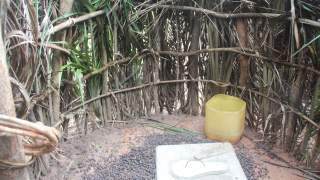The JMP uses a standard classification and estimation method to compare progress across countries, regions and the world. Download country files and create custom graphs for households, schools or health care facilities from the JMP data portal.

For a detailed explanation of the methods used by the JMP to estimate progress on household drinking water, sanitation and hygiene, see the methodological note for the 2017 update and SDG baseline report. Methodological notes are also available for estimates on WASH in schools and WASH in health care facilities. Each progress report includes a brief methods Annex which describes any changes since the previous report.
The JMP follows a similar approach in all three of these settings. Estimations begin with the identification of nationally representative data sources that contain information on the use of water and sanitation services and the availability of handwashing facilities in the home. For most countries this information is collected from households during interviews conducted by national statistical offices.
The new SDG indicators for safely managed drinking water and sanitation build on the facility type classifications, by integrating data on service levels usually from administrative sources and household surveys. For more details see metadata information for SDG global indicators 6.1.1, 6.2.1a and 6.2.1b.
A simple linear regression estimation method is then used to estimate the population using different levels of service using the JMP ladders for drinking water, sanitation and hygiene.
To support greater harmonization of data, the JMP has devised sets of core questions for water, sanitation and hygiene at households, schools and health centres.
To support decision making, the JMP has developed interactive data visualisation tools to help users to get the most out of the JMP global database.